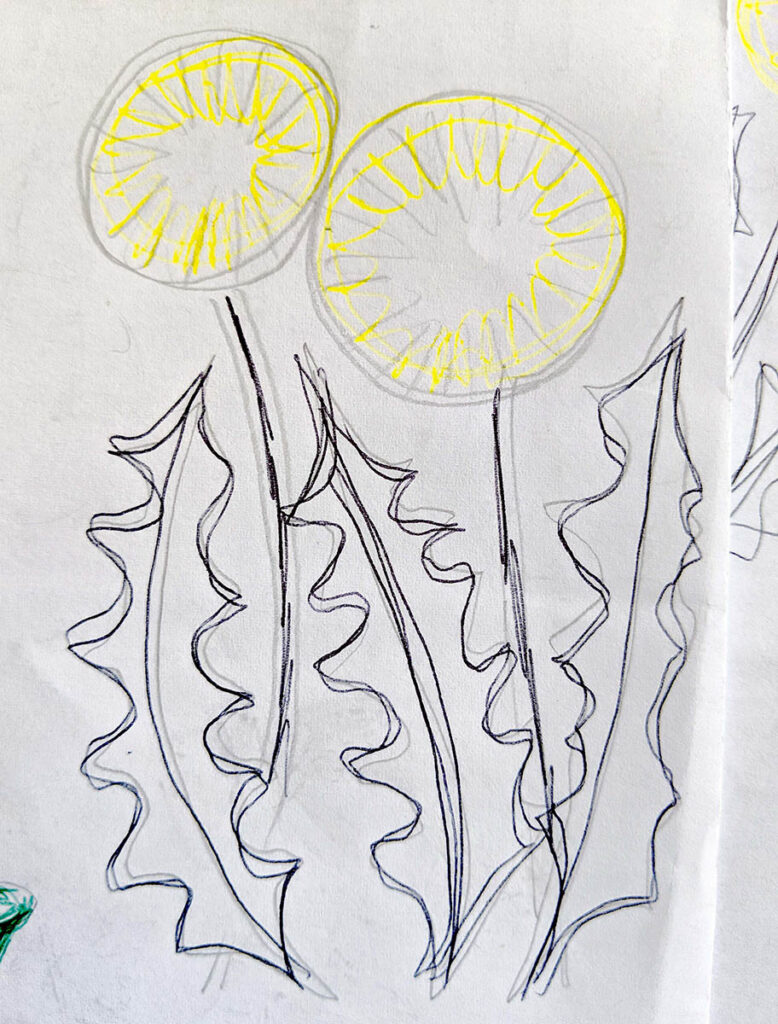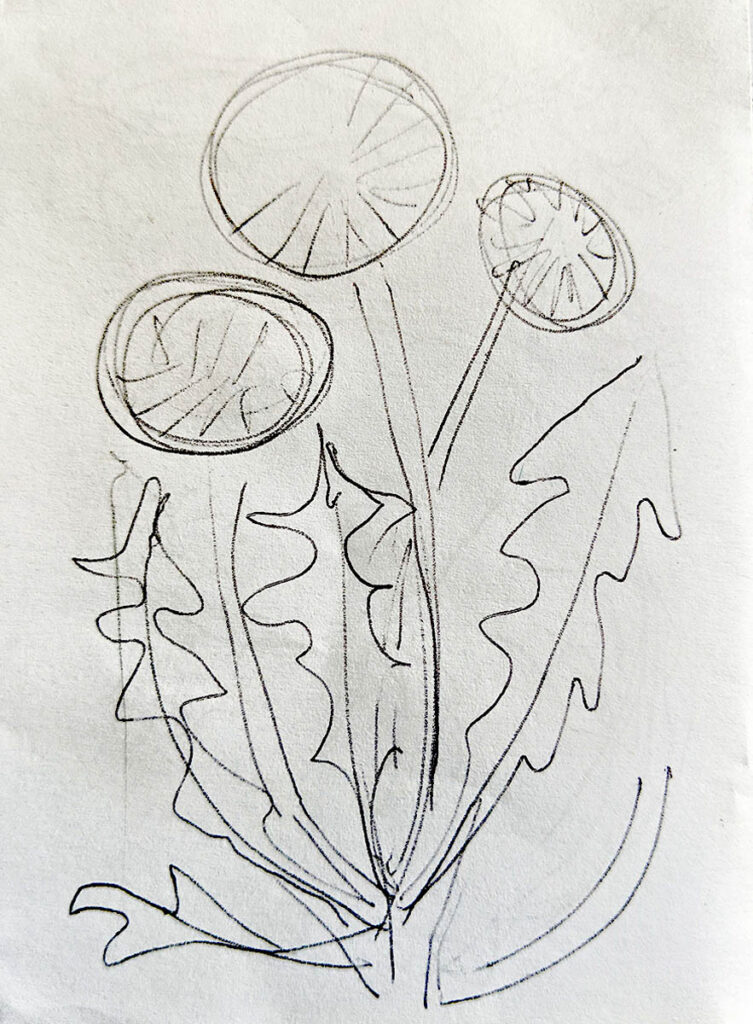
The design process for each artist is unique and often very personal. Some artists have a very conscious and clear process of working, or possibly even responding to a “brief”. For others the process is less obvious. Much of the creative work may be being processed as subconscious activity, and actions and decisions can feel intuitive rather than logical. My own practice appears haphazard and messy at times, but when I look back at the journey, there is often a visible pathway that was steadily being pursued.

I thought it would be fun to put together a story-board to show each stage of my thinking. I used my current project of the dandelion print, and collected together a photo of every stage, from the first very scruffy and quick notations made on a car journey, through all of the hesitations and changes made along the way. In each sketch the composition changes slightly, the shapes of the flowers change slightly, as I wrestle with creating an image which is still faithful to the excitement of my original idea and yet somehow more “finished” or full.

The first two sketches were literally scribbled on some scrap paper that I found in my bag as we travelled along the motorway. For a few days after I kept trying to re-sketch the composition, struggling with the shape of the flowers and the layout. I spent time looking closely at the dandelions in our own garden and drew the leaves from observation to gather a better understanding of their shape. The fifth drawing was made on a large scale using ink and a brush to try to bring some energy and confidence into the composition. After that I consolidated it into a design, ready to trace and transfer to the lino.

It has been interesting for me to look back at the journey this image has been on. Too often my sketches are scattered across different sketchbooks or on scraps of loose paper and I cannot remember where they started. When I was teaching art in schools I often wished I could share more of my own process with the students to help them understand the relevance of what was described by the exam boards as “Development”. It sometimes feels like an artificial process made just to help an examiner assess the work. However I really believe it is the most vital part of the work an artist will do.

My key takeaways would be this; Rarely is it a good thing to simply stick with your first idea. Any idea that’s worth something is always worth developing, testing, experimenting, and trying to improve. There can be disheartening moments when it feels like it’s just getting worse the more you work on it. If this happens take a break and try again the next day. Something will always come of it, even if not what you expected or planned. This is possibly the most rewarding aspect: allow the work to take the lead, just observe what has happened and allow the next stage to follow as a natural result, loosening any pre-conceptions about what you wanted the work to be.

As artists, we design, and imagine, and can guess where things might be going, but are never really in control of the end result. The best we can do is to observe, take note, and learn as we go.